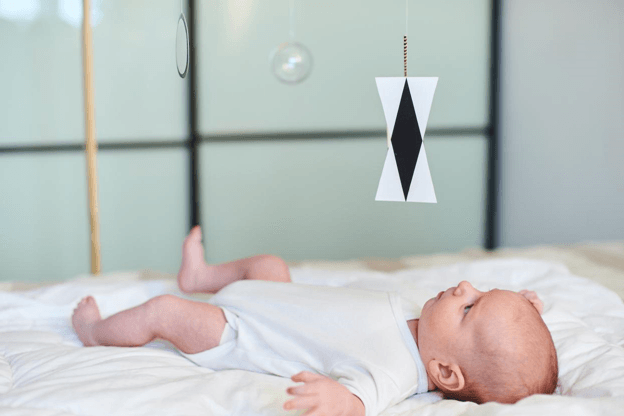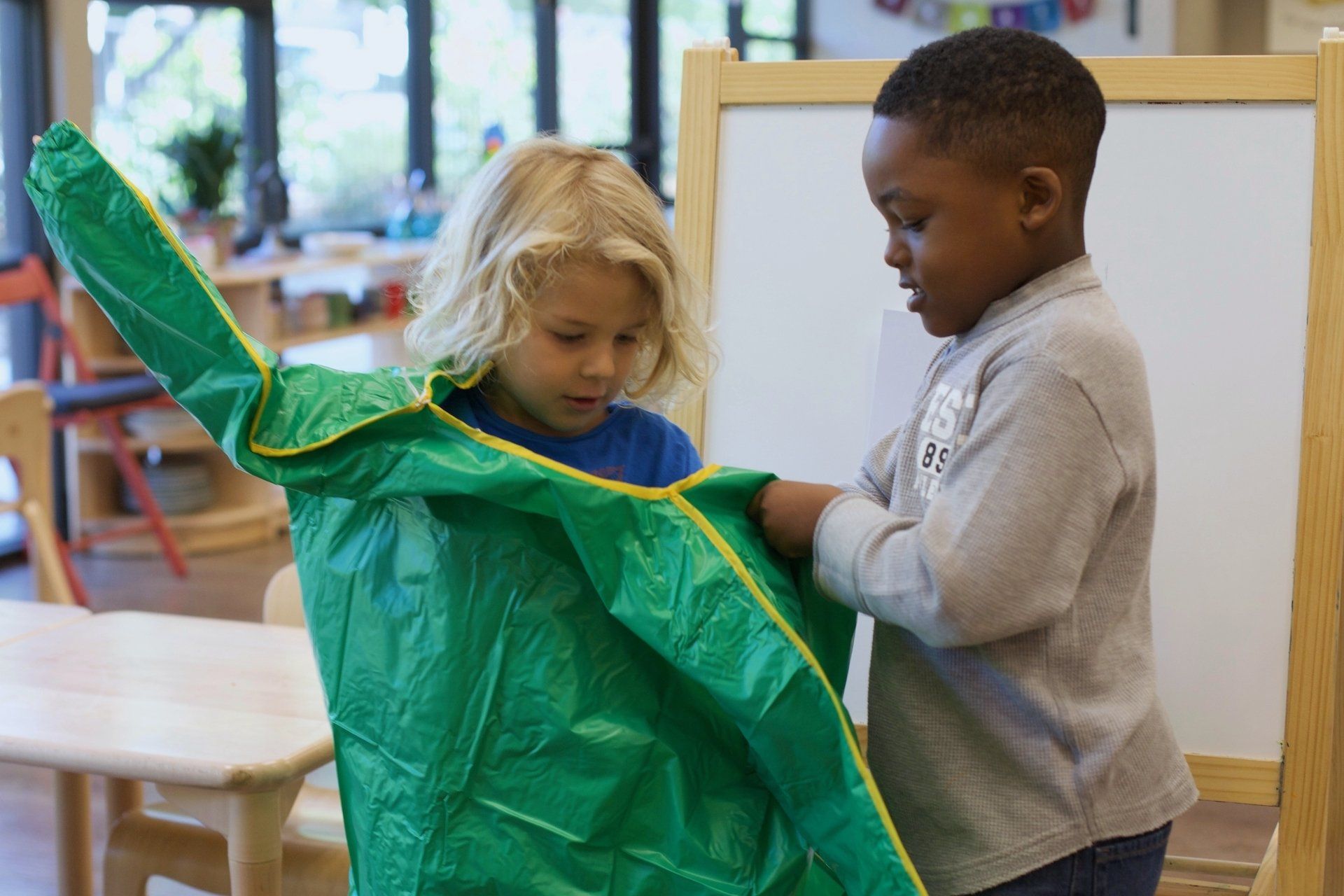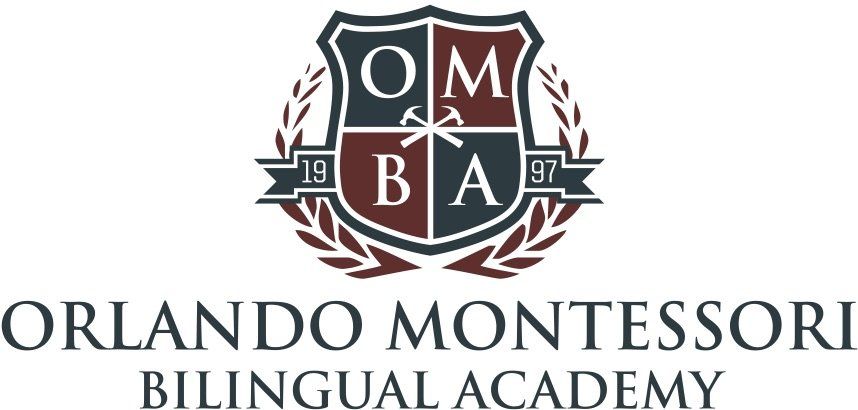Blog Layout
150 Years: The Power of the Story, Part 1
Sep 21, 2020

This article is part of a series that we will share throughout the 2020-2021 school year to celebrate the 150th birthday of Dr. Maria Montessori. Check back often for more posts that reflect on the past, present, and future of Montessori education.
Every Montessori journey is a bit different. For some, it starts during childhood as a student. For others, we begin as adults, either in the role of a parent or educator. Sometimes the journey may seem brief, yet what we learn becomes woven into who we are. Other times, Montessori philosophy drives our life’s work.
Over the next several months we will be sharing interviews to highlight a few of these journeys, each from a different perspective. Today we will share that of Shawnaly Tabor, M.Ed.. Shawnaly currently teaches lower elementary at Damariscotta Montessori School in Nobleboro, Maine. She attended Kalispell Montessori School in Montana (now called Woodland Montessori School) as a child and later found herself returning to the method as an educator. We think you’ll find her story fascinating and inspiring.
You were a Montessori student as a child. What was that experience like for you? What were some of the lessons, experiences, or feelings you can recall from your time in that type of learning environment?
One of the strongest, most clear memories I have from being a young Montessori student was in a primary classroom. I had been given a lesson about the golden beads and I clearly remember holding the thousand cube after the lesson and there was sun coming in the window and it was one of those early thousand cubes - they were all the ceramic glass - and so I remember it being a little bit shiny and glittery in the sunlight, and I remember holding it and thinking, “Wow. This is a thousand.” It was so special and I can clearly remember it, and I remember the weight of it, and then looking at it because it was made of all of the individual beads. I remember kind of peering into it to see if I could if I could see beads in between the bead gaps.
Then when I was a little bit older in upper elementary, I remember the Timeline of Life. It showed from simple life-forms through dinosaurs and eventually to humans with pictures, and I remember I was amazed by the beauty of it and the complexity of it and then also how small the human section was at the end.
Are there ways in which your years as a Montessori child colored your experience in other types of educational environments?
When I got into public school math classes I really enjoyed math and I felt like I understood it well. When the teacher was talking about different concepts, I would get pictures in my head that would help me understand it. At the time I didn’t really realize what was going on until I went to my Montessori training and I was reacquainted with the materials. I realized that through middle school, high school, and even college that I had been picturing a version of what I remembered of the Montessori materials. Working with them really formed a picture in my head that helped me understand math better.
Socially it was a tricky transition, but I realized that it was a tricky transition for everybody. In the valley that I’d lived in there were many small elementary schools and in the seventh grade everybody transitioned to this great big school. Everybody was having the same experience as I was, moving from a small environment to a big environment. I feel like the years I spent working in a Montessori school on independence, self-confidence, and academic skills helped support me through what could have been a really scary experience. Because the academics seemed a bit easier, I was able to make friends, and it helped my transition be easier. And I started to find the excitement within the transition, and I really enjoyed learning.
What led you to your Montessori training? What was training like for you? You mentioned that you had your former teachers as some of your training instructors.
Yes, I was able to come back and be an adult with my Montessori teachers. It was a very interesting experience. One of them had saved something I had written from when I was a child and brought it out during one of the lessons as an example. It was very special, and a little bit silly, and a little embarrassing, but it was wonderful to see them again and to have them as mentors in a new way.
After I received my public school certification and completed my student teaching there, I became aware that I did not want to stay in that system. I debated options, but I decided I wanted to work in the private sector. I researched different options and observed in different schools, but I found my heart was still in the Montessori realm. And that was where I wanted my son to be.
At the time I went to training my son was three and had started going to the Montessori school I went to as a child, too. It was being a parent that really led me back to Montessori.
What has teaching in a lower elementary environment been like for you? What keeps you returning to the classroom each year?
The kids are so amazing. The way that they see the world and the way that they approach life is different from adults. They don’t have the same life experience and a lot of things are new to them. They’re excited about learning; they’re excited about life. They wear their emotions right in the front, so there’s an emotional honesty working in the lower el. Sometimes it’s really messy but it’s always really beautiful.
The kids have this amazing ability to learn to focus on solutions and they also have this amazing empathy for other people. I would say that every child I have worked with has this beautiful empathy for other people, and it’s just wonderful.
They also say really interesting things, and it’s always from this beautiful kid perspective. I just love it. It’s also the age when they start to develop their sense of humor. The way it develops from first grade to third grade is really fun to watch.
You were a Montessori parent as well. What is your advice for families who are just beginning their journey?
For me it was familiar (the Montessori realm), but for most people it isn’t. So, one of the most important things to know as a Montessori parent is that you’re going to be confronted with a lot of ideas that might be uncomfortable simply because you aren’t used to it. It can feel more abstract because there aren’t grades, and there isn’t a ‘where is my child at according to other children’ mentality. All the kids are on their own track and we treat them as individuals and try to provide what each child needs.
It can feel disconcerting because it isn’t familiar. Even though research shows that it’s really awesome for kids, it can be really uncomfortable for parents. Just be brave and know that you’ll feel that way, and that’s okay, and the teachers are there for you. In a Montessori school it’s different; the teachers are there for the parents, too. We’re all on the same team for your child. They will be there to listen and provide anything the parent needs, as well as the child.
Montessori schools tend to be beautiful, emphasize peace, nature, and social-emotional learning. From the outside, they can look like magical places where everyone is always happy. However, it's important to understand that not every day will be perfect and that the path of development is often difficult and messy. This is okay. Teachers, children, parents, and all other school personnel are humans. We have emotions, make mistakes, and aren't perfect. What Montessori schools do have is a focus on growth and seeing mistakes as part of the path toward improvement. We accept each other on our bad days, just as openly as we accept each other on our good days. The magic in Montessori is not being a perfect, happy environment, it's in seeing the messiness as an aspect of the beauty.
Can you share a bit about your work with Positive Discipline and how you feel the model fits in with Montessori education and parenting?
Yes, it isn’t in every Montessori school even though it does dovetail perfectly. Just like Montessori, Positive Discipline focuses on ways to help the children be independent, resilient, builds communication skills, and self-regulation. What Positive Discipline has is the direct tools for classroom management. We all want children to be independent and resilient, but Positive Discipline offers a how-to guide, almost. It takes the philosophical concepts we all strive for and make it more concrete, so it’s accessible to teachers and parents.
Like with Montessori, it’s focused on long-term change. We want a better society; we’re guiding human beings. Positive Discipline also has that long-term focus. We don’t want to just stop a behavior or start a behavior, we want to help the child develop to be the best human being they can be. It can help those of us who didn’t grow up with those tools, especially in times of stress.
Is there anything else you would like to discuss regarding your personal journey with Montessori education?
It’s been a really impactful thing in my life, even during the times when I didn’t realize it. Sometimes in the moment we don’t realize where we get our strength or resilience, but when I look back a lot of the times when I’ve had something challenging happen - as we all do - I can see how the social-emotional or academic skills that I learned in Montessori have bolstered me through the challenging times. It’s become a foundation and the fabric of who I am, and so even when I don’t realize it, it’s still with me, and still supporting me.
You might also like

19 Sep, 2022
Adolescents exist between two worlds: they are no longer children but they aren’t yet adults. On this bridge to adulthood, adolescents need opportunities to develop real, meaningful, adult-level skills. They aspire to do what adults do. They are curious about how to make their own way in the adult world. As adults, we are part of an economic system. Even if we aren't using money to buy something, through our work or our hobbies we produce or consume aspects of culture. In this way, economics is about the web of interdependence we have with other people. We all depend upon the work and activity of others. Economics and Interactions If we look at economics as how people offer value in their interactions, as well as the production, distribution, and consumption of services and goods, we can really think about economics as how we organize ourselves in society. Because adolescents are building the skills for stepping into the adult world, it’s important to consider how they are developing their ability to navigate this economic aspect of adult life. How many of us had the opportunity, as adolescents, to develop the skills necessary for economic independence? How would our lives be different if, as adolescents, we had a support system so we could Oigure out a fair and reasonable cost for goods we produced, faced the reality of a proOit and loss statement, or found our way in navigating the paths of spending, saving, and sharing? Road to Achieving Economic Independence Dr. Maria Montessori realized the importance of adolescents developing these kinds of skills. In From Childhood to Adolescence, Dr. Montessori made a bold statement about our approach to education and its impact on the greater society. She stated it clearly: “The essential reform is this: to put the adolescent on the road to achieving economic independence.” So in Montessori adolescent programs, we offer our emerging young adults the opportunity to learn key skills of production and exchange. We sometimes call this “microeconomy.” The basic idea is that adolescents need opportunities to produce goods and services, and work with money and monetary systems, so they can develop an understanding and appreciation for how economies work and their own role in economic systems. Real, Meaningful, and Purposeful Work This experience can take many different forms depending upon the community. Whether running a farm stand or a holiday marketplace, adolescents get to learn key skills. They learn to balance proOit and loss. They discuss and determine how much money should be reinvested into the business to help it grow or how much money should be reinvested in the greater community. They respectfully listen to their customers’ needs and concerns and incorporate that feedback in useful ways. In order to have these learning experiences, adolescents need real, meaningful, and purposeful work. Just like young children need to actually prepare food rather than play with a pretend kitchen set, adolescents need actual experiences in creating a business plan, keeping track of income on a spreadsheet, and balancing a budget. They need to practice accounting work so they can build the skills for their own economic independence. They need to have the thrill of handfuls of cash and then face the responsibility of keeping track of those earnings. They need the experience of paying for replacement materials when they have overused key supplies. If they have developed some savings and want to invest the money, they need to Oind opportunities that align with their values. Preparing for Adult Life Too many of our young people enter the world of adult lives without having experienced their role in an economy (perhaps other than being consumers!). Economic independence is a key part of preparing for adult life. We want our adolescents to step into maturity with conOidence that they can independently navigate their new responsibilities and roles. If we give adolescents the opportunity to learn how to have a sound basis for their economic decisions, imagine where they will be when they are adults and making decisions that affect broader aspects of society!

12 Sep, 2022
In their first weeks of life, babies begin to focus their eyes and track objects. These small acts of visual control provide an important foundation for newborns who are building their neural networks. To set infants up for success, we offer a series of specially designed mobiles to aid this development. Each Montessori mobile is created with particular characteristics to help babies further develop their sense of sight, depth perception, concentration, hand-eye coordination, and more. Plus, newborns love them! Essential Characteristics of Montessori Mobiles Montessori mobiles follow a progression that parallels infant development. The first mobiles have a visual focus and begin with basic shapes. They progress to include more complicated objects and eventually become interactive and tactile. The first mobiles are simple and light enough to allow them to flow with gentle air currents. In order for infants to have the best visual experience, a mobile should be hung so that it is about 12 inches in front of them rather than directly above. When babies are lying on their back, there should be a visual line at about a 45-degree angle from their eyes to the mobile. This particular placement allows infants to see the whole mobile moving. Each mobile has visual components designed to help infants track the objects and sharpen their vision. Then after these opportunities to follow objects visually, infants begin to have more arm and hand control and might begin to reach and grasp objects nearby. To support this new ability to reach and grasp, the mobiles take a slightly different form and thus need to be easy to grasp, colorful, and safe for children to mouth. Progression of Mobiles: Visual The first four mobiles–the Munari, Octahedron, the Gobbi, and the Dancers–provide babies with meaningful visual experiences when they are just recognizing shapes and then later identifying colors.

05 Sep, 2022
In Montessori, we talk a lot about independence. However, one of the lesser known or understood aspects of Montessori is that independence isn’t the end goal. As humans, we are each wonderful, unique individuals. But we don’t exist in isolation. We live amongst other wonderful, unique individuals! In order to effectively live in community with other people, though, we need to be able to function independently. Said another way, before we can offer help to others or make ourselves useful, we need to be able to meet our own needs. How can we be independent and interdependent at the same time? We all want to make choices for ourselves, exercise our liberty, and be responsible for our own lives. At the same time, we also want to be part of something. We are designed to be both independent and be in community. These two needs are not mutually exclusive, but in fact, operate in relationship to each other. We have an innate desire to be autonomous and to belong. When we develop the ability to act for ourselves, make choices, control ourselves, and accept responsibility, we are able to be functioning, contributing members of society. We can see what needs doing and do it because we have the skills to do so. We can work with others to create solutions or produce goods and services. We can be part of a community by acting and taking responsibility for our actions, each able to contribute because we all have the skills to do so. What does this have to do with children and Montessori education? From a very young age, children are trying to exert control over their lives. Children are trying to gain functional independence from birth to about age three. In Montessori classrooms, we offer all sorts of opportunities for young children to develop skills that help them take care of their basic needs. But we don’t stop there! We also provide so many ways children can care for others and for their surroundings. Once children have mastered pouring from one pitcher to another, they are able to pour water into a vase and arrange flowers to beautify the classroom. After they learn how to sweep, they are quick to notice a spill and rush to get the dustpan and dust brush so they can help. When someone is struggling to zip their jacket, they take pride in sharing their newfound skill in service to someone else’s need. As children move into the elementary years, this service to others often takes on a slightly different form, in part because elementary-age children are developing their intellectual independence. Thus, their contribution often involves applying these newfound intellectual skills. They might notice a classmate struggling to figure out the steps in a math problem and offer support. Or when friends are in conflict, they might provide some mediation to help each party listen to the others’ perspective. In adolescence, young adults are ready to work toward being socially and economically independent. They want to figure out their place in society, grapple with real problems, and contribute in a useful way. Thus, Montessori adolescent programs offer teens the chance to develop and feel secure in their own abilities while also collaborating in real and meaningful social endeavors. In the process of running a small business, for example, adolescents are applying their intellectual skills from marketing to mathematics, while also navigating how to communicate with customers and collaborate with classmates. Why is this important? As humans, we want to achieve independence and belonging. Being independent is about learning the skills to be able to contribute in a meaningful way. All the little conquests of independence–throughout each age and stage of development–matter! When our infant reaches to grasp an object, our two-year-old demands to put their shirt on themselves, our eight-year-old argues about just and fair rules of a game, or our adolescent insists they can solve a problem with their peers, we can remember that these acts of independence are laying a foundation for our children to become part of an interdependent, harmonious society. Independence is just a step. Interdependence is the ultimate goal.
